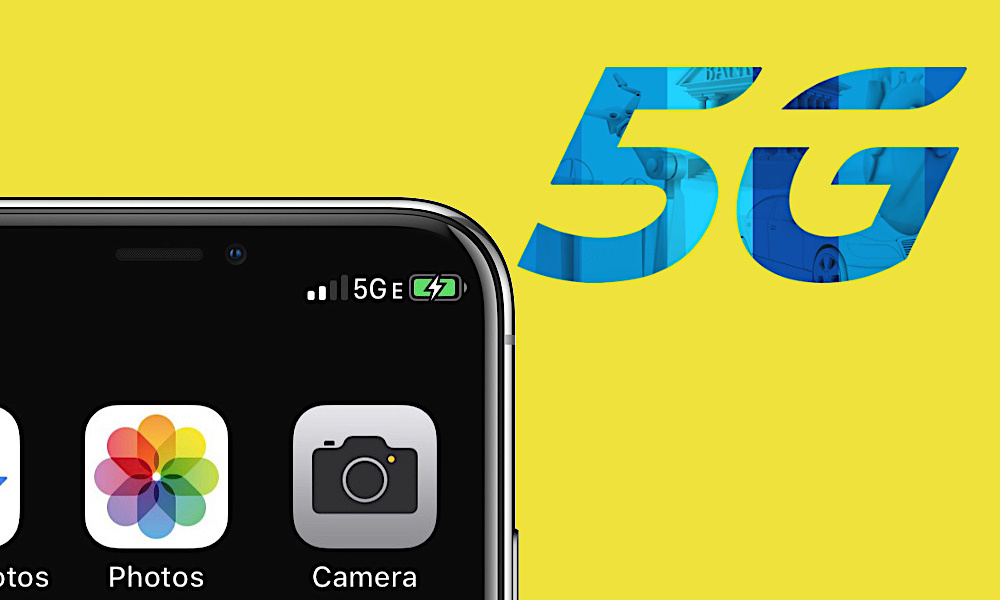AT&T Has No Plans to Stop Promoting Its Fake 5G Service
 Credit: AT&T / Phoneweek
Credit: AT&T / Phoneweek
Toggle Dark Mode
While major carriers continuing rolling out actual 5G cellular service across the U.S., one carrier, AT&T, seems to be determined to confuse its customers by leading them to believe they’re already on some form of 5G network, even without an upgraded iPhone.
Earlier this year, many AT&T iPhone users began to see a “5G E” network logo on their devices after updating to iOS 12.2 — even users of the 2013 iPhone 5s. Of course, with all of the hype around 5G networks, the indicator has led many to mistakenly believe that they’re on a 5G network, even though they’re really just on a supposedly improved 4G/LTE network — a network that is ironically still slower than many of its rivals.
To be clear, Apple is also at least somewhat complicit in this deception, since it tightly controls the iOS platform; carriers aren’t permitted to simply deploy whatever network logo they want — it has to be baked into iOS. This is why it didn’t appear until iOS 12.2 — Apple would have had to specifically add the new “5G E” indicator to the iOS code base.
However, the game that AT&T is playing with its “5G E” logo has earned it the ire of its competitors, who insist that the company isn’t playing fair, and in fact Sprint went so far as to sue AT&T for false advertising earlier this year.
Now, according to The Dallas Business Journal, the two companies have “amicably” settled the lawsuit, but sources familiar with the matter indicate that despite the settlement, AT&T is going to continue to market “5G Evolution” as a thing, so it’s kind of unclear exactly what Sprint accomplished here.
The significance of AT&T’s deception cannot be overstated.
Sprint, in its original lawsuit against AT&T
In its lawsuit, Spring pilloried AT&T for outright deception in its branding of its upgraded LTE network as being anything remotely resembling 5G — regardless of the “E” designation. AT&T responded by saying that “we understand why our competitors don’t like what we are doing, but our customers love it.” while admitting that it considers the technology an “evolutionary” step to true “standards-based 5G.”
The move, however, has largely resulted in AT&T’s branding being mocked by anybody with an understanding of the technology, and pretty much everybody else being confused as to exactly what it is that they’re getting. It’s hard to see how AT&T can believe that it’s customers “love it” other than the placebo effect of many actually believing that they’re suddenly on a significantly better network than they actually are.
It’s easy to understand as well how competitors like Verizon, Sprint, and T-Mobile are upset by AT&T’s misleading marketing; ever since the “5G E” icon has appeared on AT&T iPhones, other carriers have reportedly been fielding calls and in-store visits from customers demanding to know why their networks aren’t yet supporting 5G.
What’s even more unusual is that AT&T is already ahead of its competition in rolling out actual 5G technology across the U.S. with 5G service available in 19 cities, even thought it can’t yet provide an actual smartphone that supports it — although of course there are now millions of iPhone users out there who almost certainly believe they’re already on 5G, thanks to AT&T’s misleading advertising, which is undoubtedly the point of the whole game in the first place, despite AT&T’s claims that their customers “want and deserve to know when they are getting better speeds,” since AT&T could accomplish this just as easily with a different icon that’s far less misleading.
At the end of the day, however, it seems that with the arrival of true 5G looming on the horizon, AT&T may actually be shooting itself in the foot. It will be interesting to see how the company manages to present the much more significant improvements that a real 5G network will offer after it’s spent months deceiving its customers into thinking that they’re already on 5G.






